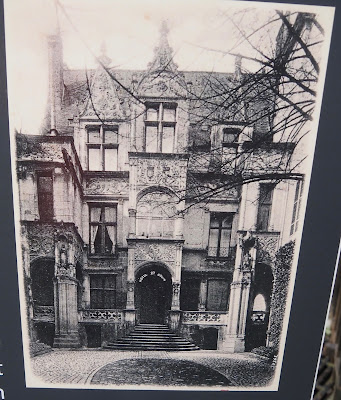 |
| L'Hotel du Monnaie - 18th C Mint building, |
If you want to know more about Tours, you can find a good description through the link. I'm just going to try to convey the essence of what I picked up.
Over its long history, Tours was important spiritually (it's the resting place of St. Martin), militarily (Joan of Arc came to Tours before launching her campaign to save France), culturally (it was Balzac's birthplace) and politically (it was the capital of France, twice), all of which importance still permeates the place, especially if you have Sylvie showing you around.
Tours got its current name from the Romans, who left traces of their occupation in the form of a huge rampart wall and the foundations of an amphitheatre that could seat 34,000.
The amphitheatre is gone but the rampart wall is still visible:
 |
| Beyond the French hedge, and next to the Musee des Beaux Arts, the old Roman wall. |
Tours' Christian tradition prevailed after the departure of the Romans.
 |
| Foundations of a nunnery, from the 10th century. |
In the thirteen and fourteenth centuries, grand cathedrals were built (and destroyed).
 |
| Cathedral St-Gatien |








No comments:
Post a Comment